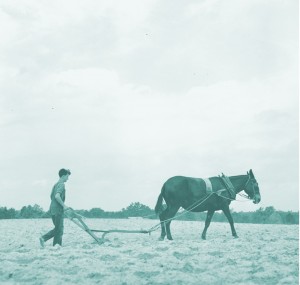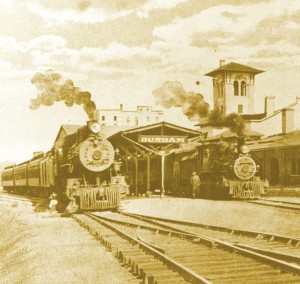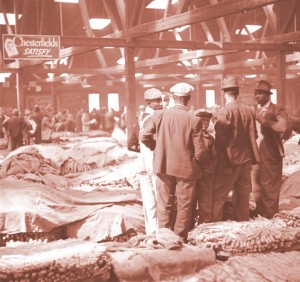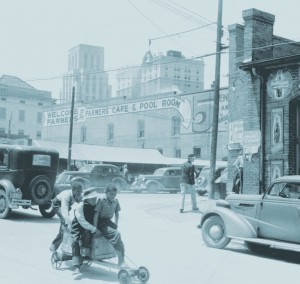Learn - Soundscape
Bull City Soundscape | Trust Building Gallery | 212 W. Main Street
The Trust Building Gallery
The Trust Building Gallery is funded by Durham natives Michael Lemanski, Carl P. Webb, Sr., and Dewayne Washington; Connecting to the rich history of the Trust building and reactivating the collaborative energy of Durham’s entrepreneurial pioneers.
The Museum of Durham History has curated the opening exhibition in the Trust Building Gallery. The exhibit has two sections: Anonymous Ancestors and Bull City Soundscape. Learn more about the Bull City Soundscape below and learn more about Anonymous Ancestors here.
Bull City Soundscape
The Bull City Soundscape guides visitors through different eras in Durham’s past.
Raleigh-Hillsborough Wagon Road
Long before Durham was a city, Main Street was a wagon road that connected Raleigh and Hillsborough. That road crossed the Roxboro / Fayetteville wagon road at present day Main Street and Mangum. Rural sounds—a horse, plow, crickets, and cicadas—surrounded subsistence farmers in the fields along the road. The soil was poor and the farms were small. Taverns and inns appeared along the road, next to farmhouses. The early residents of this area, including Dr. Bartlett Durham, were known to be rowdy and the area was once described as a “roaring old place”
“Dr. Bartlett Durham was a fine, portly looking man. He was a jovial fellow. On moonshiny nights he would get a group of boys together and serenade the town. I remember on one occasion Ed Lyon, L. Turner, Jim Redmond, and Dr. Durham went out to serenade. I don’t rememeber where we went. We had some horns, a fiddle, and a banjo.” Account by early resident Thaddeus Redmond, excerpted from Jean Bradley Anderson, Durham County
Durham Station
In the 1840s, rural sounds were punctuated by the hiss and chug of a train pulling into Durham Station. Bartlett Durham sold three acres to the North Carolina Railroad in 1849, and a small village formed around the station. The sounds of the railroad were here to stay:
But it’s downright uncanny how trains have become part of the local culture. In the 1950s, it was common for concerts in the Nelson Music Room, just 150 yards or so from the track, to have their museum drowned by diesel horns. In the 1980s, culturati staged the opera Carmen in a courtyard between two refurbished warehouses near the track. Just as the tenor opened his mouth for the Toreador Song”—Wooooooo-whooooooo Whooooooooo! The horn went on longer than the song did. Another time, a troupe was performing Hound of the Baskervilles. Toward the climax, Watson is frantic because it appears that the villains will make their escape. He urges Sherlock Holmes to haste, but the unflappable detective assures him, “Don’t worry, Watson. There are no trains at this hour.” You know what happened. -Jim Wise, Durham Tales
Tobacco Boomtown
After the Civil War, Durham’s population exploded around the burgeoning tobacco industry. The population grew from 250 in 1870 to 18,241 in 1910. The singing of the tobacco auctioneer and the humming of machines filled the many warehouses and factories in Durham.
From 9 to 5 o’clock Durham’s streets reflect the activity of its businesses houses and professional offices. Then the hoarse bellow of the bull whistle at the American Tobacco factory reverberates over the time, joined by the shrieking blasts of the Liggett and Myers whistle. The iron gates of the factory yards are flung wide and an army of workers pours forth—men and women, white and colored. Buses and trucks, heavily laden, rumble along the thoroughfares. For an hour or two the streets are alive with the hurry and noise of a big city. Then the bustle subsides and relative calm is resumed.” Description of Durham, Federal Writer’s Project, 1939
Thriving City
Durham became a thriving city, home to Black Wall Street and renowned for higher education and medical facilities. Sounds of people, cars, trucks, and commerce filled the streets.






